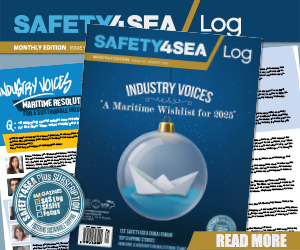Lessons from Marine Accident Reports
The UK MAIB has issued this year Safety Digest including lessons learnt from maritime accidents. One case investigates how a failure to recognise a suspended load may result in death.
Modifications were being carried out on thediving bell recovery system of a diving supportvessel. The modifications were part of anupgrade to enable the bell to be recovered inthe event of a main bell winch system failure.The work involved installing a new wincharrangement for the bell’s cursor.
The new winch was used to raise the 4 tonnecursor to allow technicians to work on top ofthe bell. The winch system was designed suchthat the brake was automatically applied whenthe winch control was placed in the neutralposition or when hydraulic power was removed.
Once the cursor was in position the brake ofthe new winch was applied to lock it. Severaltechnicians then worked on top of the bell fora period of time.
Part of the modification required removingbuoyancy blocks from the top of the diving bell.A technician climbed on top of the bell to dothis, but the blocks were very cumbersome andit became apparent that the cursor would haveto be raised further to enable the blocks to beremoved. Power was applied to the new winchand an operator went to a control position sitedabove the cursor and diving bell, from wherehe began to raise the cursor.
From his controlposition, the operator was unable to see the topof the diving bell or the technician on top of it,and was being directed by hand signals from avisible part of the deck below. Once the cursorwas at a suitable height, lifting was stopped,power to the winch was switched off, and workon top of the bell set to continue. A few secondslater the winch rendered and the cursor fell,trapping the technician between the divingbell and the cursor.
Despite his colleagues’ best efforts and rapidevacuation to hospital, the technician diedfrom his injuries.
The cause of the winch failure was attributed toa faulty pilot valve in the cursor’s winch controlsystem, which prevented the winch brakes fromapplying once hydraulic power was removed.
|
Investigation revealed that a pilot valvein the hydraulic system was not seatingproperly, allowing pressure to bypassand thus prevent the winch brakes fromapplying properly. Further, the designincorporated a single point of failure: onepilot valve serving two brakes. This hadnot been approved by the vessel’s owners,operators or classification society beforethe modifications began. Formal approvalof systems and their component elementsis an essential safety barrier, and shouldnever be circumvented.Most importantly, this was a newsystem that had yet to be commissioned. It is essential not to place any confidencein machinery until it has been fullycommissioned and properly tested. |
Source:UK MAIB, Safety Digest 1/2014































































Hands injury represent over 50% of all injuries in the workplace. Many injuries can be minimised if not eliminated with the use of the safer methods of handling suspended loads and use safer lifting apparatus, work practices and tools. The objective of hands‐free lifting is to eliminate hand and finger injuries by removing them from the energy source – and avoid all caught between, struck‐by and struck‐against incidents. Hands and fingers represent a tool that enables you to do wonderful things with them, and unfortunately there are no spare parts for these if you damage them.